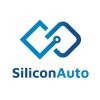Position Overview:
We are looking for a highly experienced Physical Design Lead/Manager to join our team. This role is critical in driving the physical design of ASIC/SoC products for the automotive industry, ensuring that our designs meet performance, power, and area (PPA) targets while adhering to automotive standards.
Key Responsibilities:
- Physical Design Strategy: Develop and implement physical design methodologies for ASIC/SoC products tailored for automotive applications, focusing on optimizing PPA.
- Design Implementation: Oversee the physical design flow from RTL to GDSII, including floor planning, placement, clock tree synthesis, routing, and signoff.
- Team Leadership: Lead and mentor a team of physical design engineers, providing technical direction and fostering a culture of excellence and innovation.
- Collaboration: Work closely with architecture, design, DFT, and verification teams to ensure seamless integration and adherence to specifications.
- Tool Evaluation: Assess and implement advanced physical design tools and methodologies to enhance design efficiency and effectiveness.
- Quality Assurance: Establish and maintain design rules and guidelines to ensure compliance with automotive industry standards and best practices.
- Design Optimization: Conduct design reviews and perform static timing analysis (STA), signal integrity analysis, and power analysis to meet automotive requirements.
- Continuous Improvement: Stay current with industry trends, technologies, and best practices in physical design, driving innovation within the team.
Qualifications:
- Bachelor's or Master's degree in Electrical Engineering, Computer Engineering, or a related field.
- 15+ years of experience in physical design for ASIC/SoC development, with a focus on automotive applications.
- Proven experience leading physical design teams and managing complex projects.
- In-depth knowledge of physical design tools and methodologies (e.g., Synopsys, Cadence, Mentor Graphics).
- Familiarity with automotive industry standards and regulations (e.g., ISO 26262).
- Strong understanding of PPA trade-offs and design optimization techniques.
- Excellent problem-solving skills and the ability to work effectively in a team-oriented environment.
- Strong communication skills, both verbal and written.


